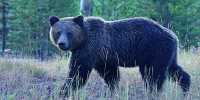The main types of dog coat patterns we know today are 2 million years old and can be as old as wolves, according to new research. Like snowflakes, no two dogs are the same – they vary in shape, size, mood, and personality. The dog coat patterns are unique to each person and are much more evolutionary complex than you might think. Professor Danika Bannasch, the co-first author of the study, published in Nature Evolution and Ecology, said in a statement, “When we think about all these variations of coat color in dogs, some of it happened long before ‘dogs’ became dogs.”
“Genetics has become much more interesting because they tell us something about canid evolution.” Banash and colleagues investigated the diversity of the agouti-Signaling Protein (ASIP) gene a gene that regulates yellow pigment production and determines the coat color of other mammals.
As well as a yellow pigment, wolf and dog create a black pigment and it is two unique combinations that give each dog its own unique coat color pattern. In fact, only two mutations in the ASIP gene give birth to five different color patterns: dominant yellow, shaded yellow, agouti (band of different colored pigments in single hair), black saddle, and black back. Further studies of the dominant yellow color revealed that it was much colder than expected and had existed long before dogs were domesticated 30,000 years ago.
By studying the genetics of ancient wolves and dogs, researchers have confirmed that the genes responsible are about two million years old and therefore not inherited from modern gray wolves. “[The main yellow] didn’t come from the modern wolf. It was a long time ago,” Bannasch said. Instead, the ASIP DNA pattern of the yellow dog “probably originated from an extinct canine that was isolated from the gray wolf 2 million years ago,” the authors wrote.
The ASIP genetic makeup of the yellow dog is almost identical to that of the Arctic white wolf, a finding that co-author Chris Kaelin said the team was “initially surprised”. The team believes that this can be explained by the process of natural selection – having a light coat would have been convenient for a canid ancestor living in an Arctic environment, so the coat pattern is maintained in the population.
















